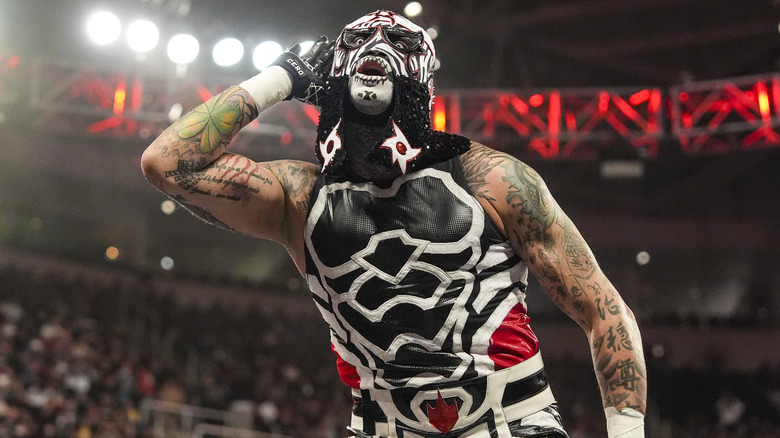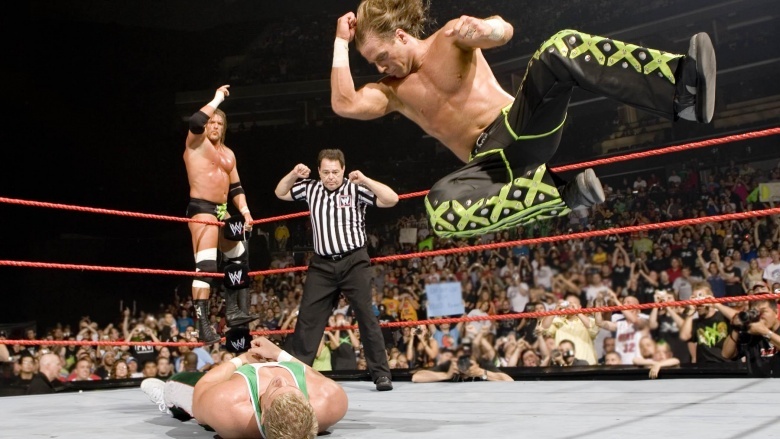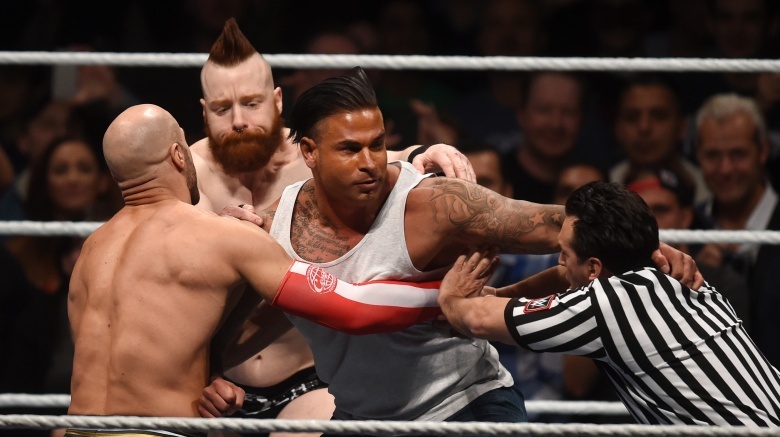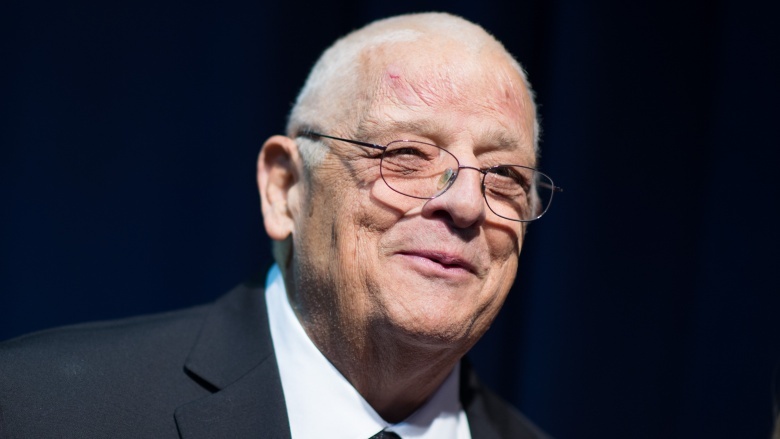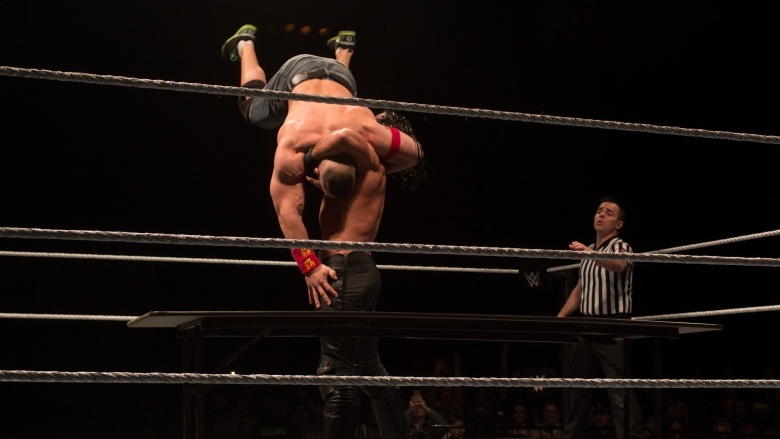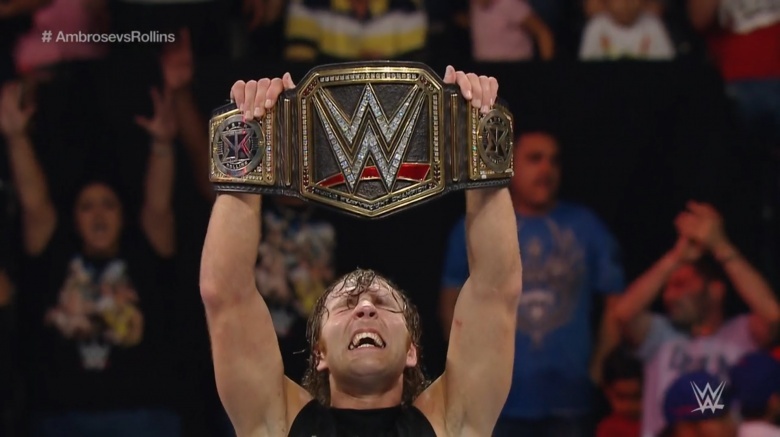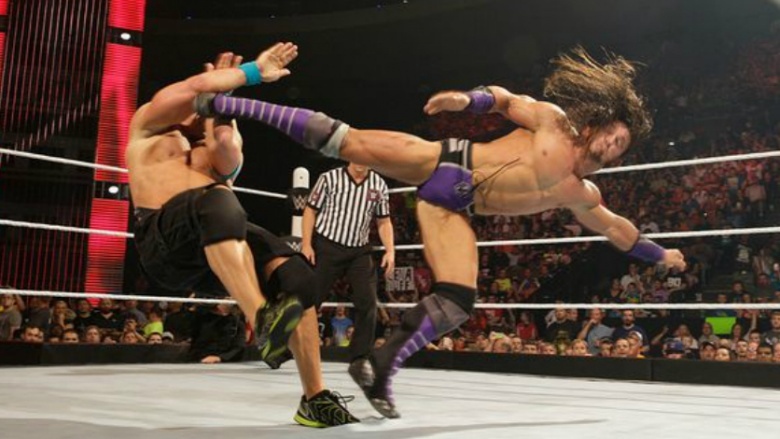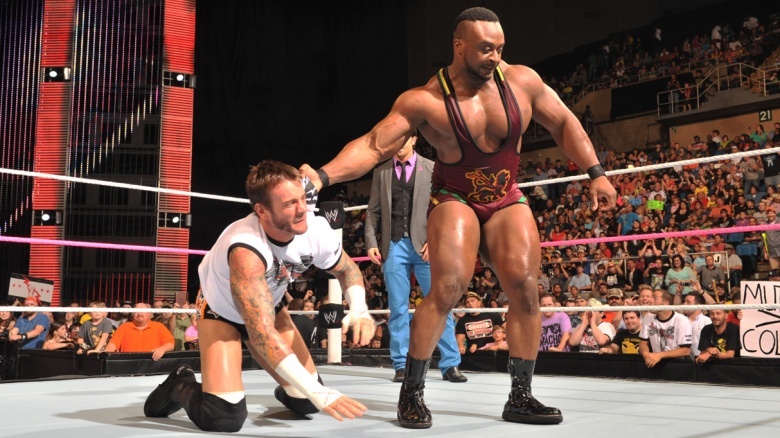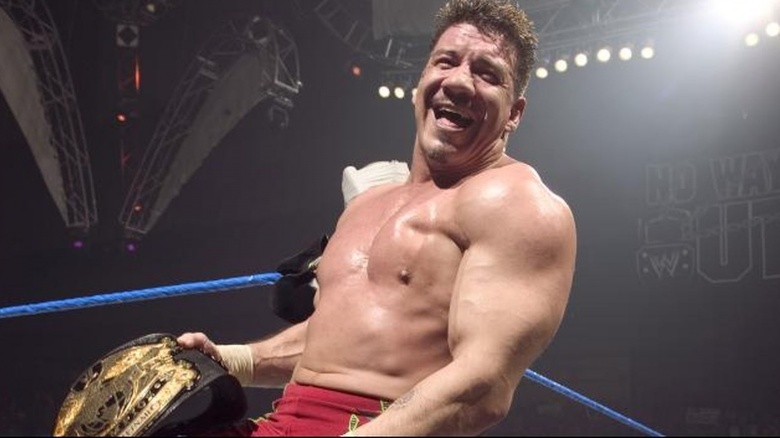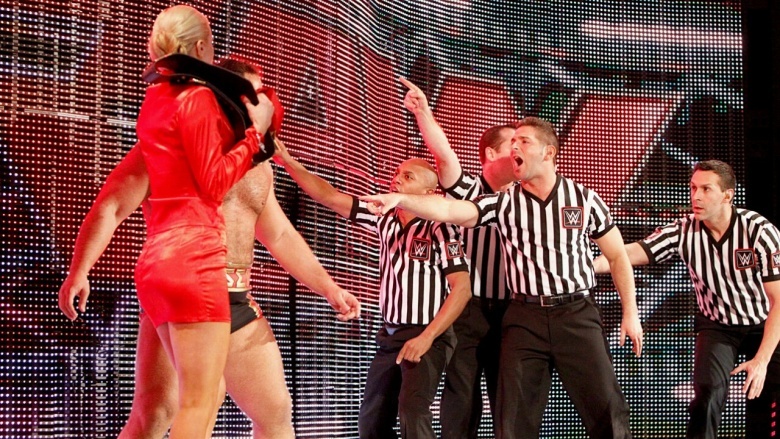Biggest Myths About Wrestling People Actually Believe
It's a land of suplexes, slams, Superkicks, and scripted promos, but is wrestling "real?" While the average person who doesn't watch professional wrestling might describe it as being "fake," the truth is that it's actually a very active and dangerous profession. Even if every superstar gets formal training to learn how to hit the mat properly, pull their punches, and support the guy lifting them up for a suplex, there are still all kinds of crazy events and occurrences that can happen throughout the life of a professional wrestler. We've assembled the ultimate Survivor Series team of myths people actually believe, so we could try to shine some light on these weird and bizarre rumors from behind the curtain.
Wrestling is 'fake'
We'll address the elephant in the room when it comes to myths about professional wrestling. Is it fake? It depends on what you mean. Wrestlers have lost teeth, broken bones, and even died in the ring for the sake of putting on a performance for the fans. Yes, that's right: performance. The events and matches are predetermined and scripted by the promotion's bookers and writers. It's on the wrestler to make it look as real as possible without actually injuring his or her opponent. Some people look at it as glorified stuntman work, but most people should have a lot more respect for it than that. You don't hear people complaining about a Jackie Chan or Avengers fight scene saying, "you know that stuff is fake, right?"
The matches are super-scripted
Many people expect wrestling matches to be tightly choreographed, where every thrown punch was itemized like a grocery bill. Well, wrestling's a lot more chaotic than that. Interviews, backstage segments, and the rest are very tightly scripted. Wrestlers know the story around the fight, and how it's supposed to end. But what ends up happening in the matches is almost entirely up to them. Usually, there's discussion backstage, where ideas for big moves ("spots") are planned and placed in the sequence. Mostly, however, things just go where they will, and the wrestlers must take note of how a match is sinking in with the crowd (or just plain sinking) and adjust accordingly.
If someone's injured, they have to improvise to end things quickly. However, this isn't always possible. For instance, Triple H ripped his quad in half during a 2001 match — despite finishing the match, he had to endure one of Chris Jericho's brutal submission moves, one that involved H's already-shattered leg being bent and stretched to the point of his feet being over his head. And that's not even the worst in-ring injury forcing a change in plan. So if you hear a wrestler screaming in pain, there's only a halfway-decent chance they're pretending.
The blood is 'fake'
Let's get this straight: the blood is real. The circumstances, however, usually are not. Many wrestlers employ "blading", where they use a hidden razor blade or small box-cutter to get the blood flowing. Some performers use sports tape to wrap their fingers, with a razor (or a piece of one) cleverly concealed inside. Others carry their blades in their wristbands.
Sometimes the ref passes a blade to someone at an opportune time. If you ever see a wrestler take a chair shot to the head (which he probably blocked with his hands at the last second), and he's writhing around in pain on the ground with his arms around his head—he's probably blading. Some wrestlers, such as the late, great Dusty Rhodes, would cut straight across their forehead, but this habit changed over the years in order to hide the scars (like the ones pictured here) by blading in areas covered by hair.
Wrestlers lift their opponents by themselves
It looks impressive when the 300 pound man made of muscle is easily lifted into the air by the guy two-thirds his weight. Ever wonder why wrestlers make it look so easy without blowing their backs out? Their opponents are helping them with as many moves as they can. If the wrestler is going for a body slam or suplex, you'll see the victim place his hand on the other guy's body for support and to alleviate a lot of the weight to be carried. Likewise, wrestlers lightly jump when being thrown into German Suplexes and other moves where they appear to be lifted as if they were nothing. It's all about proper timing between the wrestler doing the move and the recipient. Let's get something straight: the lifting they do is dangerous and can easily injure if improperly done. Many veteran wrestlers end up with knee, spine, and quad issues due to lifting their opponents up so many times over the years.
The belts are meaningless props
So why do people get flustered over wrestling being "fake," when they get emotionally attached to TV and movies? If everything's scripted and planned, why do wrestlers cry tears of joy when they win a title? Doesn't it actually mean as much as a third grader declaring himself the crown prince of Uranus?
Thinking about a pro wrestling title being earned like any other combat sport title isn't quite right. It's less "winning by knockout in the third round," and more "getting a promotion at work for doing an excellent job." If somebody wins a world championship, it's a reflection of years of hard work . That wrestler had to build up their character over the years and earn the love (or ire) of the fans.
Being a world champion reflects the confidence the company has in that wrestler to represent the company. Some wrestlers like Mick Foley, Daniel Bryan, and Steve Austin didn't get that confidence at first. It was only after they turned the fans to their side, and made themselves impossible to ignore, that the company was forced to put the title on them.
Wrestlers are really hitting their opponents
Wrestlers aren't really punching each other as hard as they can. They make it look like they are, but they're pulling their punches and kicks at the last second. Likewise, the receiver of the blows sells the move as it happens, making it as believable as possiblecan. Just like how stuntmen perform while filming a Hollywood movie—everything looks convincing in motion, but if you took a frame-by-frame look at each hit, you'd see that they're holding back at the last second. They're also not clenching their fists, resulting in more of a slap with your fingers closed only a portion of the way to make minimal impacts that kind of look real. Most kicks to the head (including Shawn Michaels' iconic Sweet Chin Music superkick), is often blocked by the wrestler putting their hands up at the last second to block the foot from hitting their face. Meanwhile,the person doing the move slaps their thigh or chest to make it sound like they connected. The same can be said for chair shots. If a giant, muscular man was swinging a chair at your head with all the force he's capable of, you'd probably, y'know, die.
Wrestlers abuse steroids
You can thank Vince McMahon for the whole wrestlers-abusing-steroids thing. While most professional wrestlers are in peak physical form, steroid abuse became widespread throughout the WWE in the '80s and '90s. The WWE has been investigated many times over the years due to concerns about steroid abuse. Modern wrestlers like Daniel Bryan, Seth Rollins, and Dean Ambrose are much smaller and more natural-looking compared to their gargantuan predecessors like Rick Rude, British Bulldog, Ultimate Warrior, and Hulk Hogan. McMahon usually goes for potential wrestlers with bodybuilder physiques, but if you look at most wrestling companies in Europe, Canada, Mexico, and Japan, the rosters are nowhere near as jacked as Vince's guys.
Wrestlers party like rock stars
Unfortunately, the widespread popularity of professional wrestling throughout the '80s and '90s and the touring nature of the business led to most WWE superstars going crazy while on the road 300 days a year. We're talking parties, booze, drugs, groupies...the whole shebang. Combined with the constant stress wrestlers put on their bodies, many of these athletes become addicted to painkillers and spiral down into all kinds of other addictions. Many famous wrestlers like Scott Hall, Jake "The Snake" Roberts," Lex Luger, and Shawn Michaels have had well-known problems with substance abuse. Fan faves like Eddie Guerrero and the British Bulldog both died from heart failure at young ages while in peak physical condition, but it was their bad habits and lifestyle choices that likely did them in. Fortunately, the WWE locker room has started to phase out of all the hardcore partying that it was known for decades prior and offers rehab treatment for many of its former superstars.
Referees are there to enforce the rules
If you think all the referee does is enforce the faux rules of the predetermined wrestling match, you're wrong. Referees are often as involved in the planning as the wrestlers. Refs do enforce the rules—but no one really gets disqualified for not breaking a submission when told to, which would be a very anti-climactic finish. Refs also organize the match and keep things on track. They remind the wrestlers how much time is left, when they have to do major sequences, when they need to finish, if there are any changes needed, and any other major audibles they'll whisper to each other.
That's not to say they can't legitimate mistakes that weren't part of the plan. When you think the ref is asking John Cena if he'll ever give up (spoilers: he never does), he's probably telling him to bury the guy already and take the show home. Don't forget, most refs nowadays wear earpieces. That way they can get directions from the producers backstage to keep the show moving. They only look like they suck at their job...because they're actually awesome at it.
